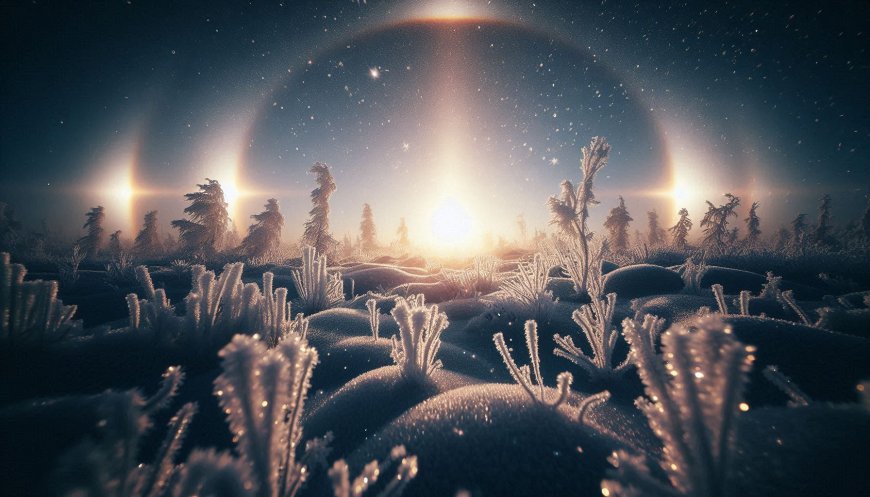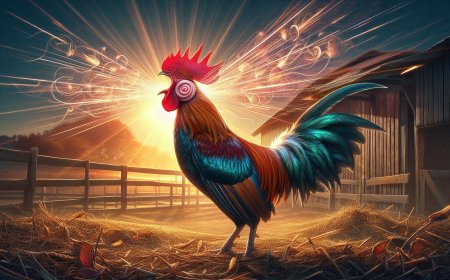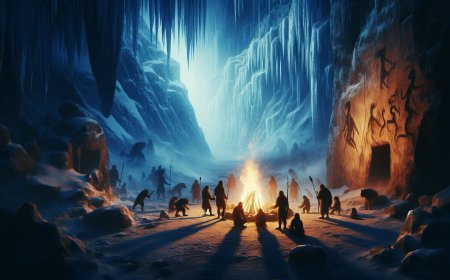The Enchantment of Diamond Dust: Nature’s Winter Gem
Experience the mesmerizing beauty of diamond dust, a rare winter phenomenon where tiny ice crystals float in the air, refracting sunlight to create sparkling halos and ethereal landscapes, turning cold, desolate scenes into magical winter wonderlands.

On the coldest, quietest winter mornings, when the world seems frozen in time, nature unveils one of its most magical spectacles—diamond dust. Despite its glamorous name, this phenomenon doesn’t involve actual diamonds but instead consists of tiny ice crystals floating delicately in the air. As sunlight catches these crystals, the landscape sparkles, transforming even the most desolate winter scene into something straight out of a fairy tale.
The Birth of Diamond Dust
Diamond dust is a rare form of precipitation that forms directly near the ground under extremely cold conditions, typically when the temperature dips to -30°C (-22°F) or lower. Unlike the snowflakes that tumble down from high clouds, diamond dust is born from clear, calm air, in a process that feels almost otherworldly.
In these frigid temperatures, the air becomes supersaturated, meaning it holds more water vapor than it can contain. Instead of condensing into droplets or sticking to particles of dust or pollen, this vapor freezes directly into microscopic ice crystals, suspended in the air like glitter. These tiny crystals, no larger than grains of sand, shimmer as they float, appearing to dance in slow motion. The entire world seems to glisten, as though dusted in diamonds.
A Dance of Light
What makes diamond dust so mesmerizing is its interaction with light. When sunlight—or even moonlight—passes through the hexagonal ice crystals, it refracts and reflects, creating dazzling displays of optical phenomena like halos, sun dogs, and pillars of light. Imagine walking outside on a bone-chilling morning and seeing a glowing ring around the sun or a fiery beam of light stretching toward the sky—these are the gifts of diamond dust.
In places like the Arctic or Antarctic, where diamond dust often occurs during the polar night, the sight of a halo around the moon against a dark sky can take on an almost mystical quality. Even in sunlight, the effect can be ethereal, casting the landscape in a dreamlike glow.
A Window into the Earth's Climate
Though enchanting, diamond dust is more than just a winter wonder. It also plays an important role in climate science. These glittering crystals, with their ability to reflect sunlight, contribute to the Earth’s albedo, or the measure of how much sunlight is reflected back into space. This means that in regions where diamond dust frequently forms, such as polar areas, it helps maintain the cooling effect of these icy environments.
Meteorologists and scientists study diamond dust to better understand local weather patterns and microclimates. This delicate form of precipitation offers insight into how extreme cold influences the environment and helps refine models that predict climate change.
The Human Connection to Diamond Dust
For those who live in the polar regions, diamond dust is both a spectacle and a warning. While its beauty is undeniable, its presence also signals harsh conditions, where temperatures can be dangerous, and visibility may be compromised. Navigating through this frosty haze requires caution, but the reward is witnessing one of nature’s most breathtaking performances.
For the wildlife that endures these conditions, such as arctic foxes or reindeer, the cold climate that produces diamond dust is an inherent part of their survival. Over millennia, these creatures have adapted to the extremes, relying on thick coats, instinct, and resilience to thrive in a world that sparkles in silence.
A Glimpse into Winter’s Heart
Diamond dust may be fleeting, but its impact lingers long after the crystals settle. It reminds us that, even in the coldest, most desolate places on Earth, there is beauty—fragile, glittering, and profound. It serves as a testament to the wonder of nature, where even in the stillness of winter, the world can transform into a shimmering masterpiece, as if touched by magic.
For those fortunate enough to witness it, diamond dust is not just a phenomenon—it's an invitation to marvel at the hidden treasures of the natural world, a reminder that even in the harshest conditions, beauty can arise, glittering like diamonds in the air.
What's Your Reaction?






























































































